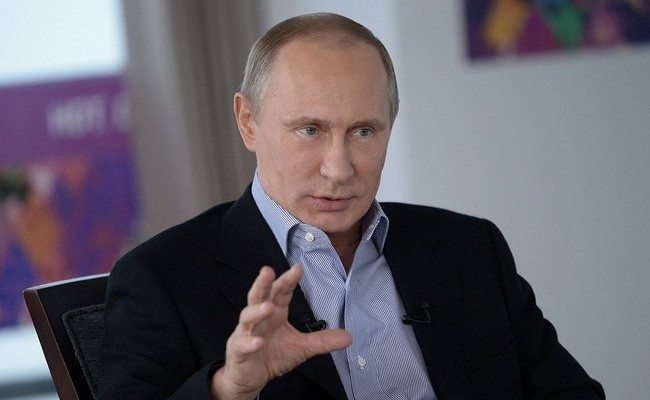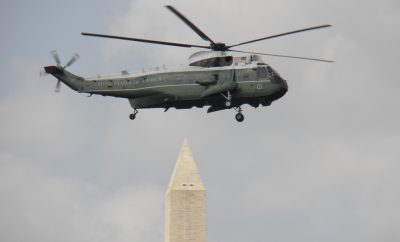 Image courtesy of [Global Panorama's via Flickr]
Image courtesy of [Global Panorama's via Flickr]
World
Why is Russia Getting Involved in the Middle East?
In September, Russian forces began a controversial air campaign in Syria in an attempt to increase the nation’s involvement in the Middle East. While some leaders have welcomed Russia’s increased involvement, many in the west have been skeptical of President Vladimir Putin’s motives. As Syrian dictator Bashar al-Assad’s position weakens amid an ongoing civil war, Russia has stepped in and with Iran’s help is ensuring he stays in power.
The situation in Syria is becoming increasingly complex as the Islamic State seeks to expand its control in the midst of a civil war between Syrian rebels and the Assad regime. But Russia’s intervention in Syria is only part of an emerging trend for the country, as it seeks to exert its influence outside of its borders. Recent developments have caused many to ask why Russia is intervening and what it hopes to gain. Read on to see what Russia has been doing to grow its influence and expand its role in the Middle East.
History in the Middle East
Russia’s intervention in Syria is not the first time that the country has been involved in the Middle East. In fact, the country has a long history in the region. The Soviet Union was a major supplier of the Arab forces who fought against Israel in the 1973 Arab-Israeli War, also known as the Yom Kuppur War. The USSR later invaded Afghanistan in 1979, occupying the country for nearly 10 years. In 1990, it lost a key ally in the region when what was then South Yemen merged with the North. Growing U.S. influence in the region further hurt the Soviet Union’s control of the region, particularly after the success of the Operation Desert Storm, a significant victory for the United States over Saddam. Shortly afterward, the Soviet Union collapsed and its influence in the Middle East largely receded.
The following video depicts Russia’s difficulties in Afghanistan:
Russia’s Return
Russia worked its way back into the region as an alternative arms supplier to the United States. Many Middle East countries saw Russia’s more lenient human rights perspective as an appealing reason to do business with the country. This shift allowed Russia to attract many Middle Eastern countries away from their traditional supplier, the United States, which was quick to abandon authoritarian leaders during the Arab Spring.
While the Arab Spring helped Russia increase its arms exports, the region was already an important market for Russia. Between 2006 and 2009 Russia’s largest arms buyers were in the Middle East. While the Arab Spring increased demand for weapons in the Middle East, Russia did not immediately expand its sales to new countries. However, its traditional customers did significantly increase their demand–most notably Syria, which increased its purchases by 600 percent.
The breakthrough for Russia came later in the aftermath of the Arab Spring, as countries who were normally loyal customers of the United States began looking to Russia. This movement started with Egypt, whose relationship with the United States soured during the Arab Spring and the subsequent overthrow of the democratically elected government of Mohammad Morsi. Seeing an opportunity, Russia secured a deal with Egypt. A potential deal between Russia and Saudi Arabia, arguably the United States’ closest ally in the region outside of Israel, highlights Russia’s ambitions for its weapons industry. However, the Russians also supply Iran, Saudi Arabia’s most significant regional enemy.
The video below details Russia’s displacement of the US in formerly pro-Washington areas:
Current Operations
In addition to expanding its weapons exports in the Middle East, Russia recently started conducting military strikes in Syria, making the ongoing civil war even more complicated. At the end of September, Russia began a controversial airstrike campaign, which largely helped the Assad regime by targeting Syrian rebels. These actions have had an impact on the relationship between Russia and several key nations within the region as well as observers in the west.
The accompanying video provides an in-depth look at Russia’s actions in the Middle East:
Turkey
Russia’s relationship with Turkey is potentially its most complicated. Turkey relies on Russia, as well as Iran, for energy and trade, which amounted to $31 billion in 2014. The leaders of the two nations are often compared to each other, with President Erdogan reminding many of Putin based on his leadership style and his motivations to remain in office.
However, the relationship has been strained recently with Russia’s bombings of anti-Assad rebels and its repeated violations of Turkish airspace. There is also a historical legacy hanging over the two countries dating back to the time of the Ottoman Empire, which repeatedly fought the Russian Empire.
Syria
Even before Russia’s recent intervention in Syria, the two were close allies. This relationship has existed for years based, initially, on military contracts that Russian arms dealers had with Syrian buyers. Their relationship was strengthened back in 2010 after Russia’s U.N. Security Council veto–Russia, along with North Korea and China, blocked a resolution to force President Assad to step down. Since then, Russia has been Syria’s strongest backer outside of the Middle East. Russia also successfully negotiated the transfer and destruction of Syria’s chemical weapons in 2014, diffusing a particularly controversial issue with the United States.
All of this serves as the backdrop for Russia’s recent incursion into Syria and its civil war. It started with Russia sending advisors and fighter planes but has continued to include ground troops, artillery, and stationing ships off Syria’s coast. Russia’s intervention in Syria has been particularly controversial because of the targets that the country has chosen to attack. While Russia initiated its air campaign with the intention to focus on ISIS and fight terrorism, many of the strikes have benefited the Assad regime.
Iran
Russia’s relationship with Iran is also particularly complex. Recently, Russia played an important role in securing the deal to stop Iran’s nuclear weapon program. But after the deal, Russia quickly unfroze an $800 million deal–previously suspended during negotiations–to give Iran a missile defense system. Additionally, it approved an oil-for-goods deal, which allows Russia to buy up large amounts of Iranian oil in exchange for food and other goods. But oil is also an area that could create conflict between the two countries. Iran’s now-unsanctioned supply of oil, when dumped on the market, could lower the international price of crude oil even further. Lately, the falling price of oil has hurt Russia’s economy, particularly in light of sanctions after its annexation of Crimea from Ukraine.
Since the Iranian Revolution, the two nations have been joined by their desire to keep the West at a distance. Even as sanctions are lifted on Iran, this relationship is likely to endure, allowing Iran to continue its anti-western rhetoric. Both nations are also united in strong support for the Assad regime in Syria. However, this shared sentiment flies in the face of more distant history–one that involved Russia either trying to acquire Iranian territory or intervening in the country’s affairs, as it did in the Iran-Iraq War in the 1980s. More recently, Russia continues to arm Iran’s regional enemies and has gone along with American sanctions on the nation.
Iraq
Along with its collaboration with Iran and the Assad Regime in Syria, Russia also recently agreed to share information with Iraq in its fight against ISIS. Doing so has put the United States in a challenging situation, as it has been sceptical of Russia’s increased presence in the region, but has also advocated for international action against the Islamic State.
Russia also has a history of supporting Iraq, most notably in the form of funding during the Iran-Iraq war. Following the American invasion in 2003, it has also worked to normalize relations with the new government, especially in order to re-secure lucrative energy contracts.
Conclusion
So why is Russia wading back into the Middle East, especially given its history in the region? For most, an interest in the Middle East generally relates to the wealth of oil found there, but for Russia it is more complicated than oil alone. While Russia has worked to get energy contracts there, it is also one of the leading producers of crude oil and is widely regarded as having the largest proven reserves of natural gas. Traditionally, the Middle East had been a major market for Russian weapons, but as the politics of the region changed the United States took hold of the market. But in the wake of the Arab Spring, Russia has been working to expand its weapons exports, while also strengthening ties to its regional allies, like Syria and Iran. The revenue from arms sales is even more important considering the growth of sanctions from the west and the falling price of oil, a crucial source of revenue for Russia.
While a more involved position in the region may help Russia economically, either through energy or weapons, that does still not seem to be the major impetus for its invasion in Syria. Ultimately, Russia’s growing role in the Middle East may simply be a product of its efforts to grow its influence around the world. Russia seems to be positioning itself to be an effective alternative to the United States and its recent actions best reflect that goal. This move, while viewed critically in the West, has also been welcomed by leaders in the Middle East as a counterweight to American influence. Russia’s recent involvement in Syria, combined with its important role in the Iran nuclear deal, lends it even more regional significance.
Resources
The National Post: Why is Russia further expected to increase its presence in Syria?
Washington Post: Russia’s move into Syria upends U.S. plans
BBC: Russia in the Middle East Return of the Bear
Al-Monitor: New Russian arms deals could shakeup Mideast market
New York Times: Russia’s military actions in Syria cause rift with Turkey
New York Times: For Syria, Reliant on Russia for Weapons and Food, Old Bonds Run Deep
Wall Street Journal: Removal of Chemical Weapons from Syria is completed
CNN: NATO Secretary General questions Russia’s aim in Syria
The Washington Post: Russia-Iran relationship is a marriage of opportunity
The United States Institute of Peace: Iran and Russia
Financial Times: Iraq and Russia to collaborate in fight against ISIS
World Politics Review: Russia-Iraq Relations








Comments